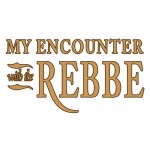Rabbi Yerachmiel Benjaminson
Just before Passover of 1980, the Rebbe started a new campaign to teach kids about the holiday and to get them excited about eating matzah, holding a Seder, and learning about all the related mitzvot.
At the time, I was a newly-married yeshivah student who had signed onto an earlier initiative of the Rebbe to enroll more kids in Jewish schools, and now I became part of this initiative too. Among the activities to publicize the Passover project, we printed and distributed 250,000 brochures which we headlined “Matzah Ball Contest,” showcasing the prizes that could be won by kids who did the mitzvot associated with Passover. Along with my fellow yeshivah students, I stood outside schools to distribute the brochures and stuffed mailboxes in Jewish areas of New York.
It was a brilliant idea. No one had thought of doing such a thing before, but the Rebbe reasoned that if kids got involved in the mitzvot of Passover, they would naturally involve their friends and relatives. And there was no better way to get them interested than by holding a contest and giving away prizes.
Indeed, this project proved enormously successful – we received tens of thousands of contest entries from kids all over New York. And we heard many stories about families that had not celebrated Passover for many years but did so this year because the kids were on fire about it. We also heard about families who had previously observed Passover in a perfunctory way, but this year did so with enthusiasm because the impetus came from the kids.
No sooner was that project over than the Rebbe had another brilliant idea – a children’s organization which he called Tzivos Hashem, “The Army of G-d.”
On the fifth day of Sukkot, the Rebbe held a children’s rally at the Chabad Headquarters at 770 Eastern Parkway, where he explained how this organization would work. Kids who joined would study Torah and do mitzvot and, through these activities, would advance in rank – starting out as privates and progressing to sergeants, majors, colonels and even generals, just like in the army. At certain times of the year, there would be rallies with prizes and medals awarded. (more…)





